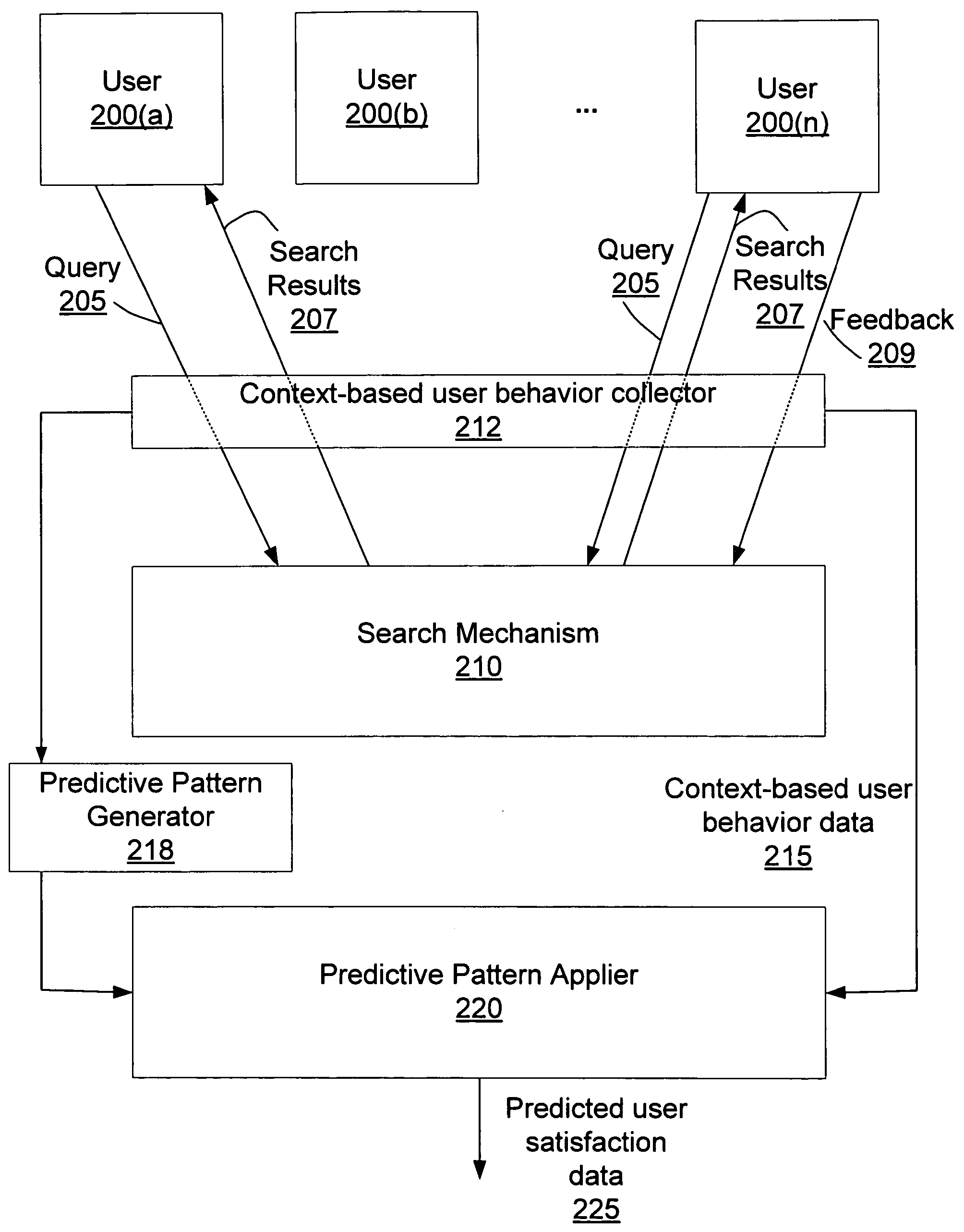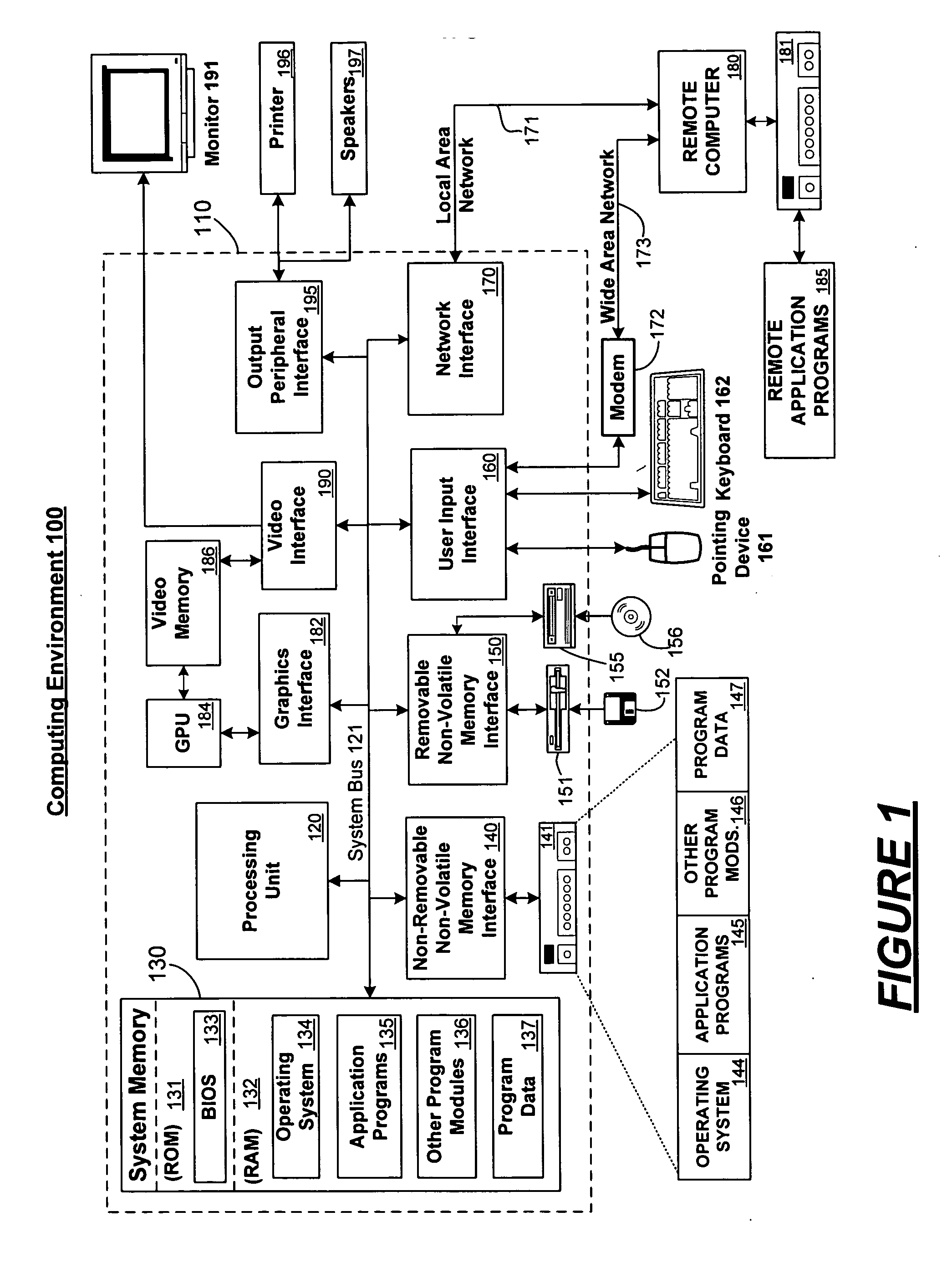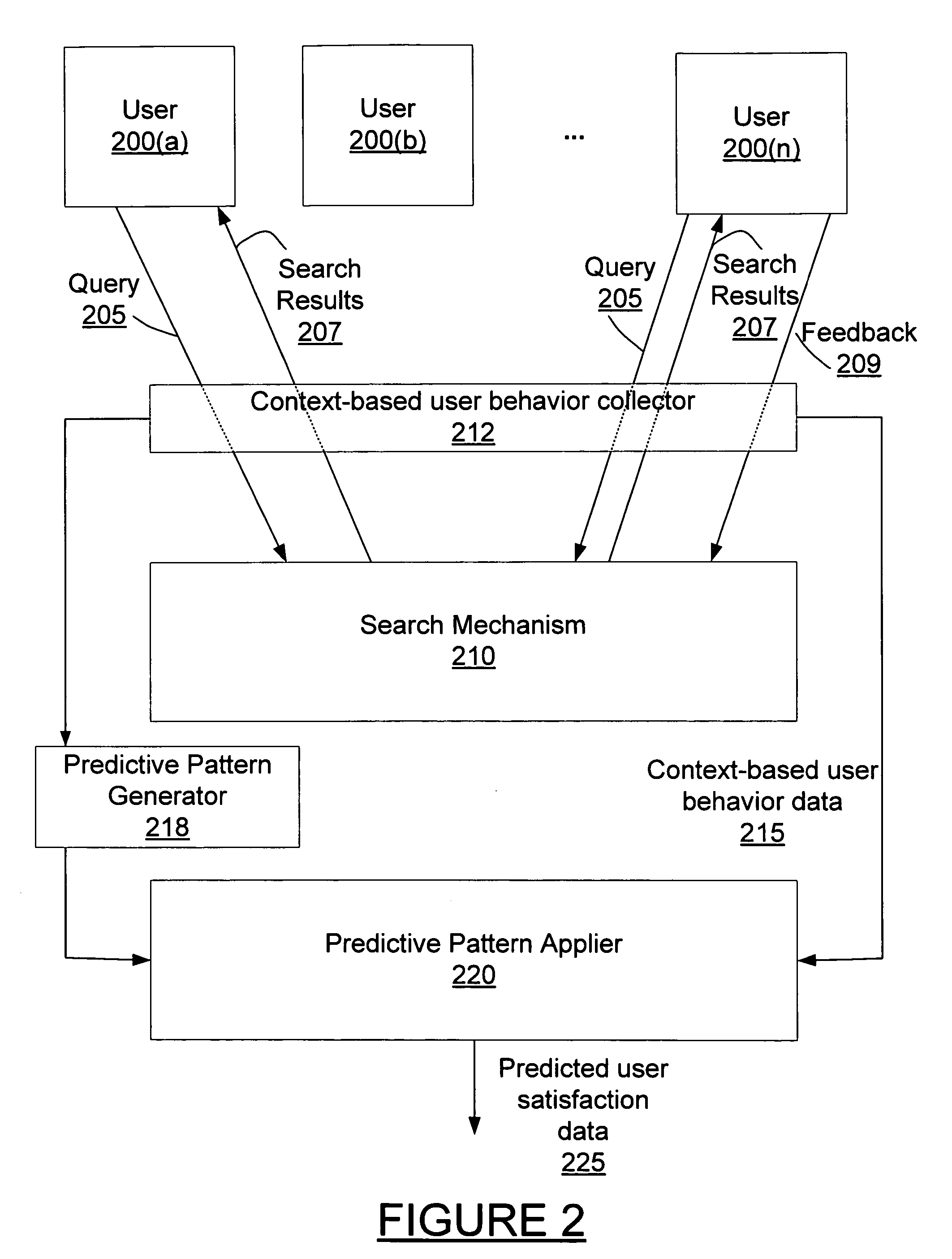Automated satisfaction measurement for web search
a web search and satisfaction measurement technology, applied in the field of data search and retrieval, can solve the problems of inability to scale the number of judgments provided for individual queries, data may be too large for users to find data by direct examination, and search engines in the prior art use non-scalable methods for evaluating the quality of search, so as to improve the quality of search results, improve the prediction of user satisfaction, and improve the effect of search engin
- Summary
- Abstract
- Description
- Claims
- Application Information
AI Technical Summary
Benefits of technology
Problems solved by technology
Method used
Image
Examples
Embodiment Construction
Overview
[0030] Predicted user satisfaction data is produced through application of one or more predictive patterns which predicts user satisfaction based on context-based user behavior data. The predictive pattern is applied to collected context-based user behavior data. Data mining techniques may be used to refine and improve the predictive pattern.
[0031] Predicted user satisfaction data can then be used to monitor or improve search mechanism performance. A report may be displayed with the predicted user satisfaction data. Problems with the search mechanism may be identified and corrected. Additionally, a dynamically-improving search mechanism may be provided which uses historical predicted user satisfaction data to dynamically improve the search mechanism's user satisfaction.
Exemplary Computing Arrangement
[0032]FIG. 1 shows an exemplary computing environment in which aspects of the invention may be implemented. The computing system environment 100 is only one example of a su...
PUM
 Login to View More
Login to View More Abstract
Description
Claims
Application Information
 Login to View More
Login to View More - R&D
- Intellectual Property
- Life Sciences
- Materials
- Tech Scout
- Unparalleled Data Quality
- Higher Quality Content
- 60% Fewer Hallucinations
Browse by: Latest US Patents, China's latest patents, Technical Efficacy Thesaurus, Application Domain, Technology Topic, Popular Technical Reports.
© 2025 PatSnap. All rights reserved.Legal|Privacy policy|Modern Slavery Act Transparency Statement|Sitemap|About US| Contact US: help@patsnap.com



